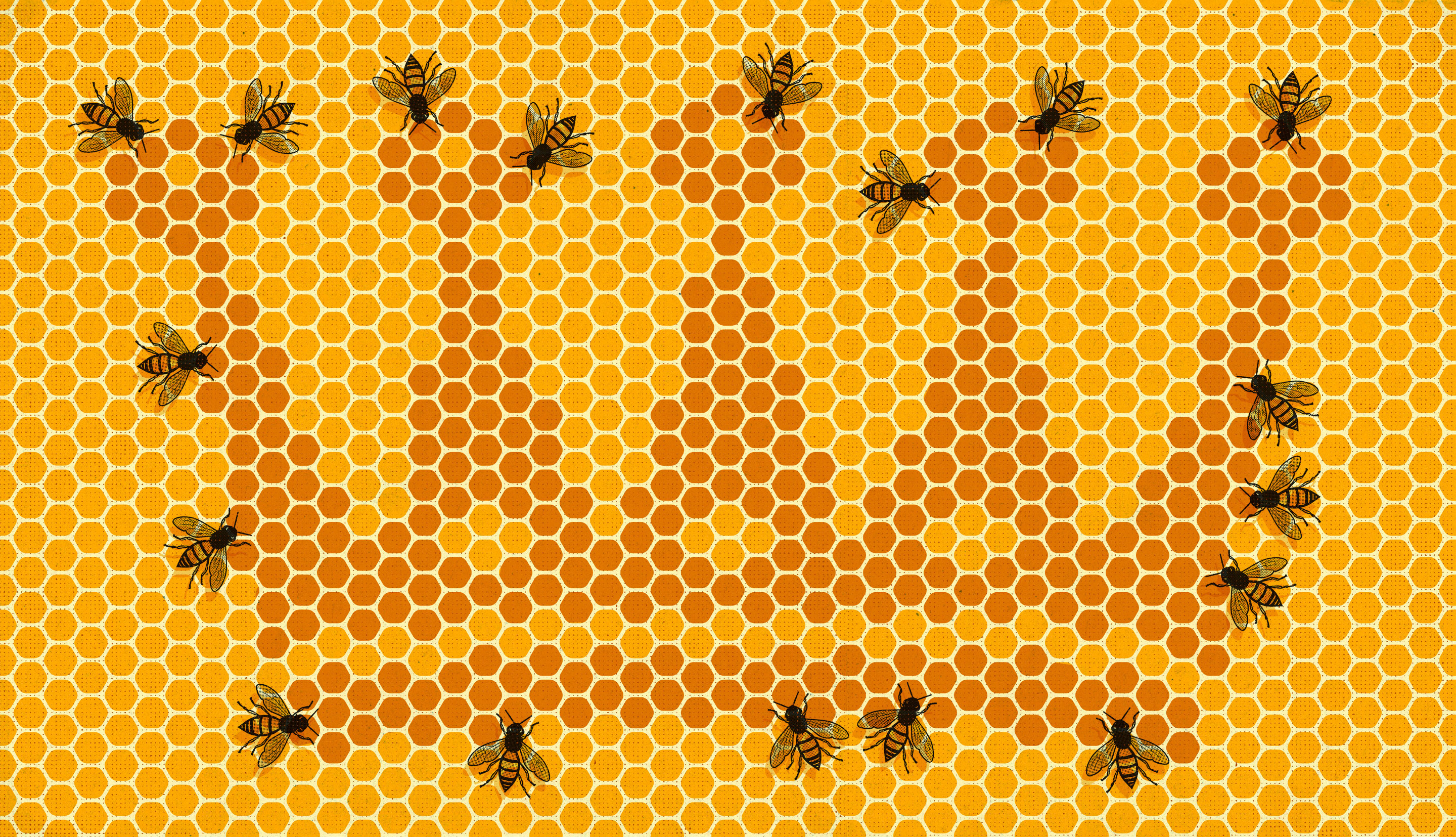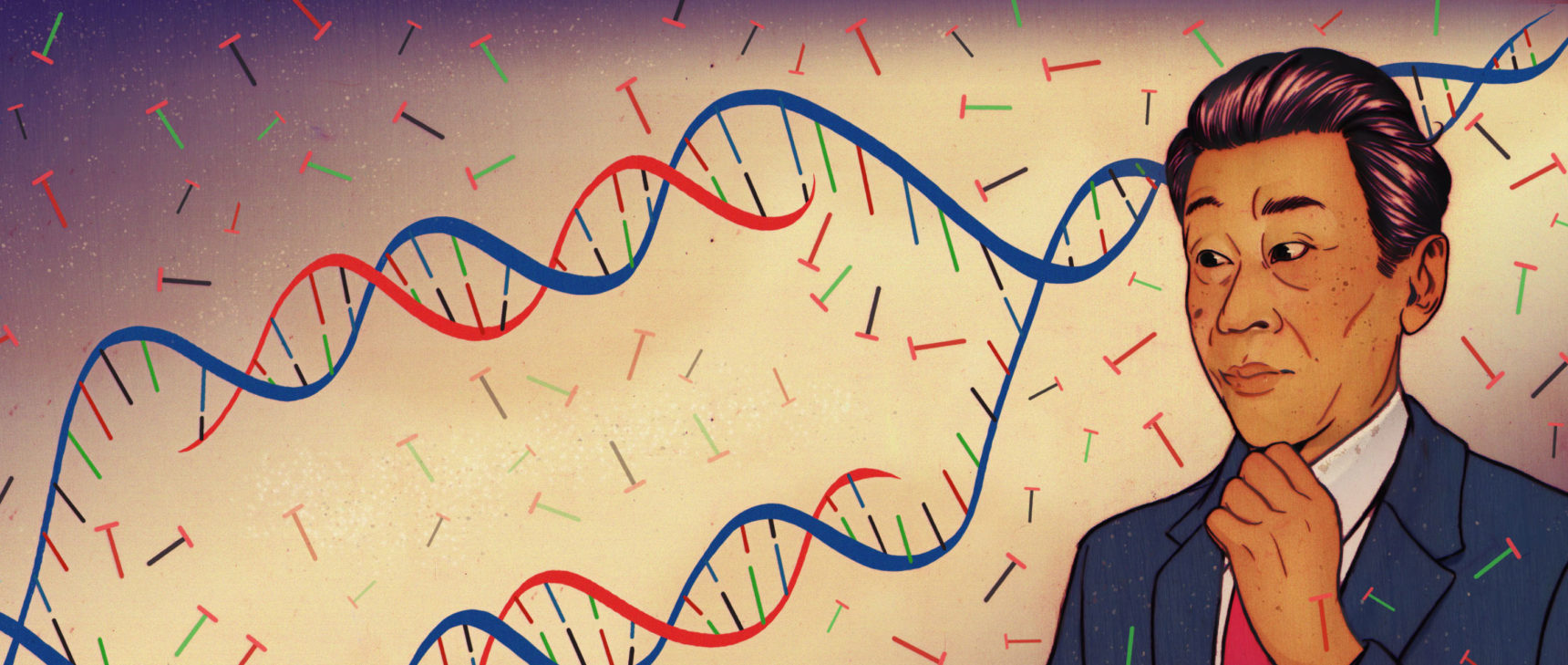Solution: ‘How Equality and Inequality Shape Birds and Bees’

Dan Page for Quanta Magazine
Introduction
Our October Insights puzzle explored how evolution may have used negative and positive control mechanisms to shape the conflicting parental functions of reproduction and child rearing. In our first problem, we modeled how the conflicting demands of these two functions might have shaped the division of labor between workers and queens in eusocial insects. In the second problem, we explored how differences in reproductive strategies for males and females could help predict whether our female universal ancestor lived further back in time than our male universal ancestor.
The puzzles produced a heartwarming dialogue among three correspondents, Michel Nizette, Stephen Rigsby and Xin Yuan Li, which produced a microcosm of how real scientific collaborations work. The three commenters all contributed original work, built on and honed previous ideas or simulations done by one another, and corrected and improved their previous efforts, based on feedback from the others, to reach their solutions. Thanks to all three of them for producing an interesting and cordial discussion that was a treat to follow.
Let’s consider the second problem first. This question is based on the fact that even though the mean number of offspring of males and females in a given generation is exactly the same, males have a greater variance in their number of offspring. The problem is simpler than the first one and can be solved using an elegant trick.
Problem 2
Imagine the two following simple reproductive scenarios, one for females and the other for males, which may have taken place over a small number of generations long ago in a sexually reproducing species such as ours.
The female lineage starts with two females initially. Each female produces two daughters in a single generation, so that the next generation begins with four females. However, two random individuals out of these four are, for reasons of disease or death, unable to reproduce. The remaining two again produce a total of four offspring, out of which only two, chosen randomly, reproduce. The same process repeats every generation. For simplicity, we assume that the generations do not overlap.
The male lineage starts with two males, producing a total of four sons. However, in this case one of the males, chosen at random, can father zero, one, two, three or four sons, while the other one fathers the remaining number required to reach a total of four. Again, two of the offspring are unable to contribute to the next generation. The other two again share four offspring between them in the same random way, each one potentially fathering zero to four sons. The process is repeated over generations, which, as before, do not overlap.
What is the average number of generations it would take for one individual to become the most recent sole ancestor of all the individuals in the female and male lineages?
This problem can be solved by figuring out the probabilities that the offspring of any one of the two original founders will take over an entire generation exclusively, starting from the first generation and continuing forever. We then take the sum of the expectation for each generation, which is the probability multiplied by the generation number, to figure out the expected number of generations. Let us consider the female lineage and designate the children of the first ancestor as A and B and that of the second, a and b. In generation one, therefore, we cannot have a universal ancestor because there are four individuals: A, B, a and b. To produce generation two, we have to pick two individuals who stay fertile. No matter which one of the four is chosen to be the first fertile one, say A, there is only one chance in three that the second, also chosen randomly, will be from the same mother, in this case, B. Therefore, the probability of having a universal ancestor for generation two is 1/3, and the expectation is 2 × 1/3 = 2/3. To compute the expectation for generation three we note that if the fertile ones are unrelated (probability 2/3), the situation is the same as that encountered in generation two, with a 1/3 probability of having a universal ancestor in generation three, for a probability of 2/3 × 1/3 = 2/9, and an expectation of 3 × 2/9 = 2/3. The same pattern of an additional factor of 2/3 repeats itself for all succeeding generations.
As we had seen before in our “Puzzles Inspired by Ramanujan,” when such self-similarity happens in an infinite series or continued fraction, we can apply a nifty trick to calculate the sum, as Xin Yuan Li pointed out. We set the sum to be X, and use the self-similarity to set up the equation X = 2/3 + (2/3)(X + 1). This simple algebraic equation simplifies to X/3 = 4/3, giving X = 4. Therefore, the expected number of generations for a universal female ancestor is 4. The case for males is a little more complicated, but you can use the principles described by Michel Nizette to generate the equation. The expectation for males turns out to be (1 + 4/15)/(2/5 + 4/15) = 29/15, or about 1.9.
If you find the math daunting, you can get the same result by listing the expectations in a spreadsheet: The sum converges quickly, in about 20 generations. Or, if you are proficient in programming, you can find it by running a simulation, as Stephen Rigsby did.
So, as we theorized, the female universal ancestor goes about 2.1 times further back in time than the male universal ancestor, under these conditions. However, this is not necessarily true of the actual human Y-chromosomal Adam and Mitochondrial Eve. In conditions of near exponential population growth (as has been the case in recent human history), no matter how much variance there is, neither lineage can generate a universal ancestor because most descendants survive. We would need to go back in time before the population growth surged to find universal ancestors. And if there was a severe population bottleneck back then (as probably happened to our ancestors in Africa), then our male and female universal ancestors may have existed pretty close to each other in time. While this remains speculative, nonetheless the theory of evolutionary descent leaves no doubt that universal human ancestors existed at some time in our past.
Problem 1
Imagine a small bee colony of 10 females. Initially, each bee’s ovaries are programmed to produce eggs at some constant rate over time. However, once the eggs are laid, their presence signals the bee’s ovaries to slow down the rate of egg laying and focus instead on caretaking. Now imagine that among the 10 individuals is a mutant that produces eggs at a faster rate and also does not respond to the “slow down” signal, but instead keeps producing eggs in a process that becomes easier with time until all the required eggs, say 20, are laid. Assume that each normal bee’s rate of egg production slows down 5 percent of the original rate for each egg laid, whereas for the mutant bee, the rate of egg laying increases 5 percent of its original rate for every egg laid. How much faster should the mutant bee’s initial egg-laying rate be, compared with a normal bee’s, in order for the mutant to take over 50 percent of the hive’s egg-laying duties? How much does this shorten the hive’s egg-laying phase?
This problem, treated purely mathematically, was well solved by Rigsby using his simulation and by Nizette with an analytical solution, yielding the following answers: The mutant needs to lay eggs 2.47 times as fast, and the hive’s egg-laying phase is shortened by a factor of 2.58. For those who want details, you’ll do well to read their respective comments. However, this solution treats egg laying as a continuous process and assumes fractional eggs. From a biological perspective, egg laying is a discrete, all-or-none process. Moreover, it is the sensed presence of a fully laid egg that provides the feedback to the bee. What happens if fractional eggs are outlawed, and we stick to biological plausibility? First, there is no way for the mutant to take over exactly 50 percent of the hive’s egg laying, since at some point all of the nine identical regular bees will lay one egg each simultaneously, and the mutant must finish laying the remaining 11 eggs before the other bees lay their second egg.
This discrete process can be modeled using a spreadsheet, and exact answers can be found using Excel’s handy Goal Seek function. Using one row for each of the 12 egg-laying events, create the following columns: 1) time, 2) the total number of eggs laid so far, 3) egg-laying rate for normal bees, 4) egg-laying rate for mutant bee, 5) time required by normal bee to lay next egg, 6) time required by mutant to lay next egg, 7) who will lay the next egg, 8) the fraction of the growing egg held by the normal bees if they didn’t lay the egg and 9) the fraction of the unlaid egg still in the mutant, if any. You then have to fill the columns with formulas for modifying the normal bee’s and mutant bee’s egg-laying rates as soon as an egg is laid. Start with an arbitrary rate, and use Goal Seek to ensure that the mutant has laid 11 eggs just before the others are ready to lay their second egg. The answer is that the mutant only needs to be about 1.5 times faster initially.
You can see how this works in the table below. We start with a normal bee (N) with a rate of 1 unit and a mutant (M) with a rate of 1.5. At time = 0.67, the mutant lays her first egg, with the other bees’ eggs being 67 percent completed. At this point the mutant’s rate increases by 5 percent and that of the other bees falls 5 percent. But the other bees, having eggs that are already two-thirds complete, win the race to the next egg and lay the next nine eggs all together before the mutant can lay her second egg. At this point, the mutant’s rate increases by 50 percent (to 2.25) and that of the other bees falls by 50 percent. The mutant is now four and a half times faster at laying eggs, and can lay 10 more eggs, just before the other bees can lay their second one, since each new egg makes the mutant faster, while the other bees’ egg-development slows to a crawl.
| Egg laying event | Total eggs laid | Normal bee’s egg laying rate | Mutant bee’s egg laying rate | Normal bee’s time to next egg | Mutant bee’s time to next egg | Who will lay the next egg? | Normal bee’s fraction of unlaid eggs | Mutant fraction of unlaid eggs |
| 0 | 0 | 1.00 | 1.50 | 1.00 | 0.67 | M | 0.67 | 0.00 |
| 1 | 1 | 0.95 | 1.58 | 0.35 | 0.63 | N | 0.00 | 0.55 |
| 2 | 10 | 0.50 | 2.25 | 2.00 | 0.20 | M | 0.10 | 0.00 |
| 3 | 11 | 0.45 | 2.33 | 2.00 | 0.43 | M | 0.29 | 0.00 |
| 4 | 12 | 0.40 | 2.40 | 1.77 | 0.42 | M | 0.46 | 0.00 |
| 5 | 13 | 0.35 | 2.48 | 1.54 | 0.40 | M | 0.60 | 0.00 |
| 6 | 14 | 0.30 | 2.55 | 1.33 | 0.39 | M | 0.72 | 0.00 |
| 7 | 15 | 0.25 | 2.63 | 1.13 | 0.38 | M | 0.81 | 0.00 |
| 8 | 16 | 0.20 | 2.70 | 0.93 | 0.37 | M | 0.89 | 0.00 |
| 9 | 17 | 0.15 | 2.78 | 0.75 | 0.36 | M | 0.94 | 0.00 |
| 10 | 18 | 0.10 | 2.85 | 0.58 | 0.35 | M | 0.98 | 0.00 |
| 11 | 19 | 0.05 | 2.93 | 0.46 | 0.34 | M | 0.99 | 0.00 |
| 12 | 20 |
Incidentally, egg-laying time for the hive actually increases by 50 percent in the above case. The mutant needs to be about 2.24 times faster to restore egg-laying efficiency to the same level as it was before. If the mutant is any faster than this, the hive’s egg-laying efficiency increases. In any case, the above scenario shows that once feedback controls are reversed, the hives are well on the way to role specialization.
Thank you to our three contributors for your interesting work. All of them deserve a piece of the Quanta T-shirt. However, this is, alas, a winner-take-all situation. The T-shirt goes to Michel Nizette for his clear analytical contributions. Congratulations!



